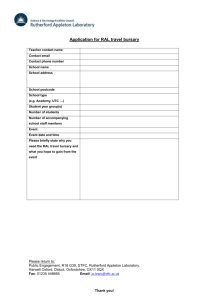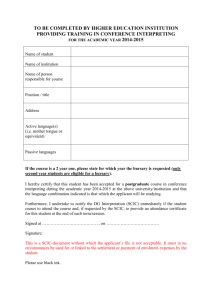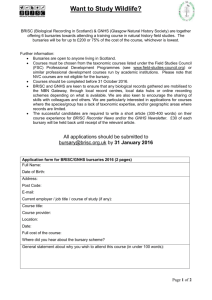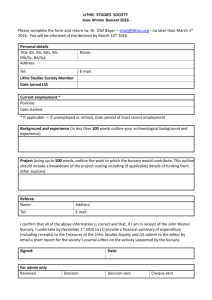Research bursary program provides glimpse into field for high
advertisement
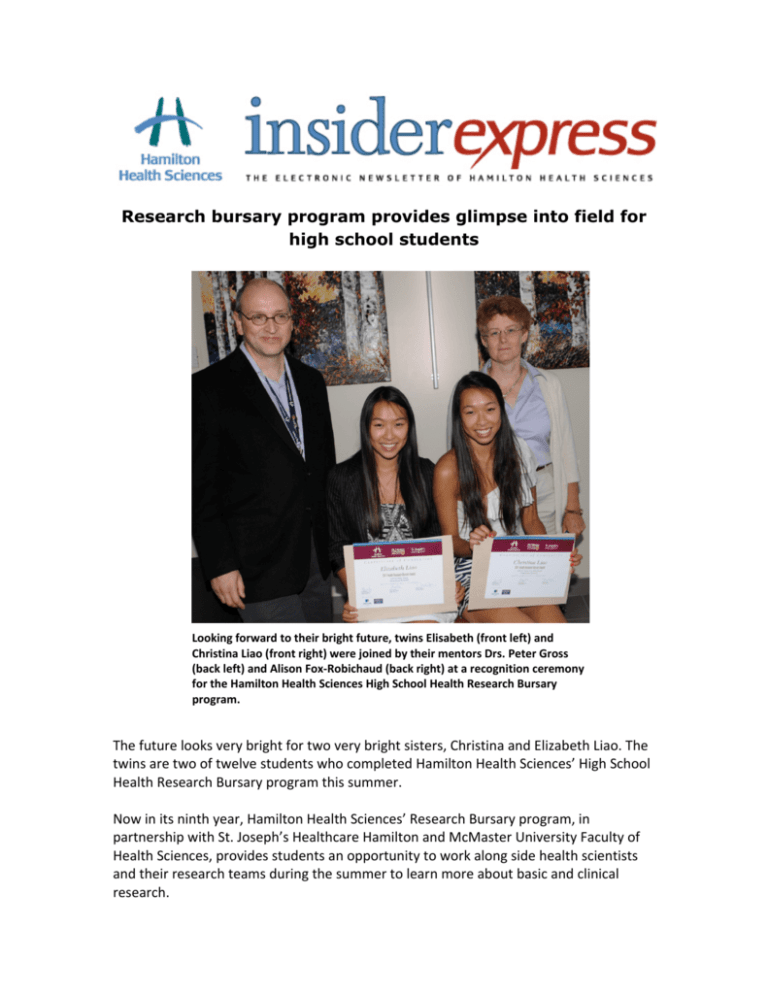
Research bursary program provides glimpse into field for high school students Looking forward to their bright future, twins Elisabeth (front left) and Christina Liao (front right) were joined by their mentors Drs. Peter Gross (back left) and Alison Fox‐Robichaud (back right) at a recognition ceremony for the Hamilton Health Sciences High School Health Research Bursary program. The future looks very bright for two very bright sisters, Christina and Elizabeth Liao. The twins are two of twelve students who completed Hamilton Health Sciences’ High School Health Research Bursary program this summer. Now in its ninth year, Hamilton Health Sciences’ Research Bursary program, in partnership with St. Joseph’s Healthcare Hamilton and McMaster University Faculty of Health Sciences, provides students an opportunity to work along side health scientists and their research teams during the summer to learn more about basic and clinical research. “Recognizing that students are nominated by their high school only exemplifies the high calibre of students applying to this program, all worthy and deserving of a bursary and placement opportunity,” said Dr. Heather Arthur, Chief Research Officer, Hamilton Health Sciences. The program has made a significant impact on students and mentors, allowing research to flourish with student contributions being on par with third and fourth‐year university students. When Westdale High school graduates, Christina and Elizabeth, were in grade nine, they came to work with their dad for ‘Take Our Kids to Work’ day and witnessed a surgery on a mouse, “I thought that was really interesting,” said Elizabeth. Both sisters jumped at the opportunity to come back for a summer to learn more. Christina worked with Dr. Alison Fox‐Robichaud to learn how diabetes and obesity may place people at increased risk for critical illness from infection, and Elizabeth worked with Dr. Peter Gross to study how cholesterol‐lowering drugs inhibit platelets. “It was an honour to work with Peter in the same lab as Masters and PhD students and see how it’s done day‐to‐day,” said Elizabeth who plans to attend medical school. “ This experience provided a glimpse into what’s next and how to build on that.” “I feel very lucky to be a part of the program,” said Christina. “I loved meeting other students from across the province, coming to work everyday and working with previous bursary students who are publishing work soon.” A mentor with the program since it began eight years ago, Dr. Fox‐Robichaud is very proud of her previous mentees’ pursuits; she can recall each of them by name and what they’re doing now. One is a graduate student, two are in medical school, two plan to apply to medical school and one is in fourth‐year biochemistry with three publications under his belt. “I do it because my mother did it,” said Dr. Fox‐Robichaud. “I was a faculty brat. I grew up spending my summers working on campus and valued the exposure. I want to make the same impact on students who are considering becoming a scientist or a physician.” “I love to teach and value the benefit of having and being a good mentor. It’s rewarding and I’m inspired by the students who are incredibly bright and driven to succeed.” Much like the students involved, the program has a bright future thanks to corporate sponsors: Tripemco Burlington Insurance, Aviva Traders, and Waterloo Insurance, awarding each student $1200. A three‐year grant from the Ministry of Research and Innovation allowed for the program to expand across Ontario, which has further been supported by contributions from Hamilton Health Sciences. Of the 62 students who have participated in the program from 2004‐2010, 33 have returned to work with their bursary mentor as hired summer students, 46 have pursued health/life sciences studies and 14 have either published, presented or secured junior funding awards. “The program has proven to be a successful recruiting tool for Hamilton researchers. The benefits and impact equips students with skills, knowledge and contacts that will help them throughout their academic years in pursuing post‐secondary studies in the health sciences and technology industry, ” said Dr. Fox‐Robichaud. “The program provides a great foundation and starting point for students recognizing that it can take 10 ‐15 years to become a scientist ‐ from undergraduate to post graduate studies, medical school and residency. Hopefully this helps with making a decision about whether or not it’s the direction they want to pursue.” August 31, 2011

